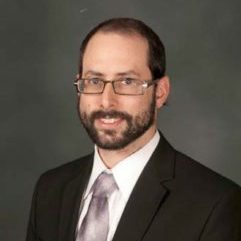The Talmud tells us that the pattern of shofar blowing in each congregation evolved over time. The long, trumpet-like tekiah was used by all, but the teruah took on many different forms, varying with time and geographic location. Amazingly, after several generations the result was invariably corresponded to one of three basic sound patterns. Every congregation independently arrived at either the wailing, three-part shevarim, the pleading whimper of the teruah or a combination of the two.
The Talmud reports that upon witnessing this incredible phenomenon Rabbi Avahu instituted these three basic patterns worldwide. Rabbi Hai Gaon (939-1038) explains that this ruling was not the result of compromise (in a case of halachic disagreement). Rather, it was intended to promote unity and solidarity in the global Jewish community. In addition to our “personal” shofar sounds, we include those of the entire nation as well.
Our desire is for the feelings and yearnings of every Jew to be heard. A Jew is never left to cry alone.
The story is told of a young boy who people noticed standing alone in the synagogue on Rosh Hashana. Although no one recognized him, he was quite obviously troubled. They watched as the poor child tried unsuccessfully to articulate his problems. Becoming increasingly frustrated and upset, the boy began to cry. Finally, in desperation the boy removed a whistle from his pocket and began to blow it with all his might. The congregation stood still and watched as the boy blew with all his heart and soul, releasing pent up emotions and conveying his pain with more clarity than any words could have. When he was done, the boy turned, and with a shining face and a bounce in his step left the sanctuary, mission accomplished.
We have all experienced moments of extreme emotion, whether in joy, pain, relief, fright or sorrow. At these instances our feelings are so powerful that we can do virtually nothing other than scream. Similarly, the blowing of the shofar is not a logical expression of thought, but an emotional one. It has the potential to convey prayers that are too complex and deep for words or even song.
King David wrote (Psalms 89:16) “Fortunate is the nation who knows the shofar blasts.” We are fortunate when we are in touch with our own hearts and our personal shofar blasts. We are even more fortunate when we are united enough to anticipate the needs of another.
This Rosh HaShana as we listen to the shofar being blown, let us remember that these blasts are the vehicle with which we offer up our deepest emotions, those that words cannot verbalize. And let us pray that the sounds of the shofar carry not only our feelings but the suffering and yearning of Jew everywhere whose heartfelt “shofar sounds” may be different than our own.
This article first appeared in the Debut issue of NickNacks, a publication of the Norfolk Area Community Kollel.

0 Comments